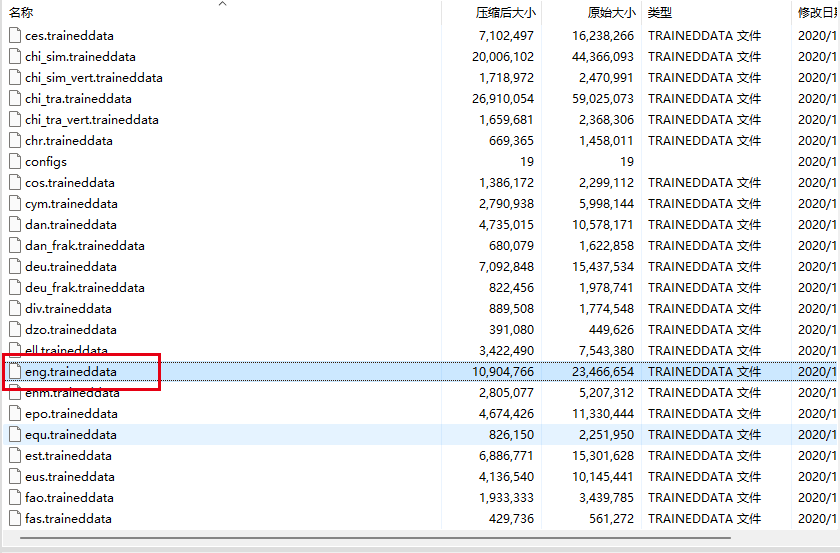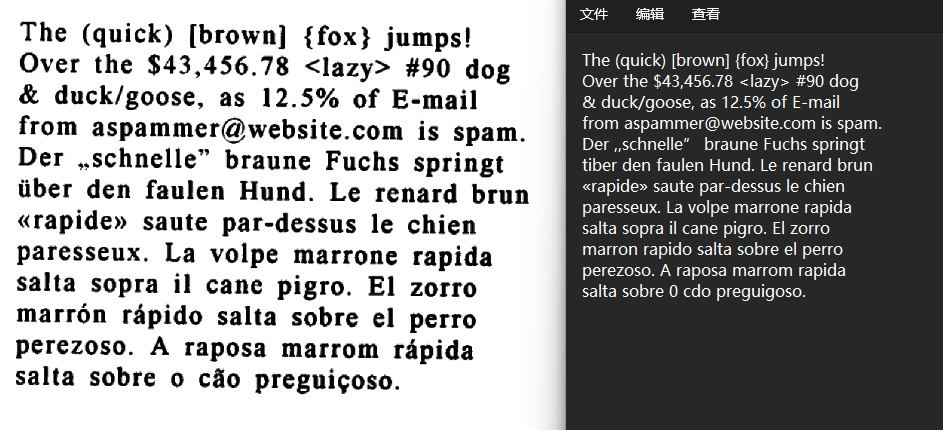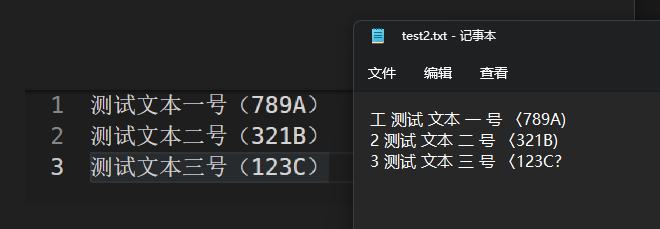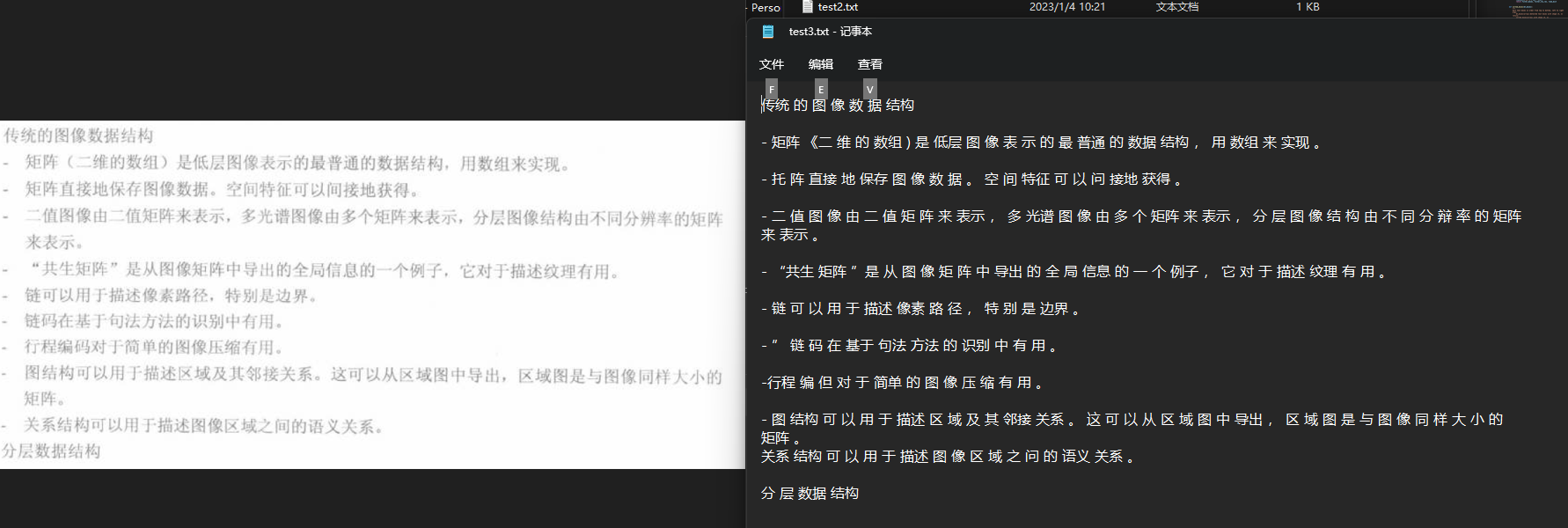1
2
3
4
5
6
7
8
9
10
11
12
13
14
15
16
17
18
19
20
21
22
23
24
25
26
27
28
29
30
31
32
33
34
35
36
37
38
39
40
41
42
43
44
45
46
47
48
49
50
51
52
53
54
55
56
57
58
59
60
61
62
63
64
65
66
67
68
69
70
71
72
73
74
75
76
77
78
79
80
81
82
83
84
85
86
87
88
89
90
91
92
93
94
95
96
97
98
99
100
101
102
103
104
105
106
107
108
109
110
111
112
113
114
115
116
117
118
119
120
121
122
123
124
125
126
127
128
129
130
131
132
133
134
135
136
137
| import cv2
import numpy as np
import time
import random
def detCut(imgPath,savePath="./result",show = False):
# 将透明背景图片转换为白色背景
start_time = time.time()
image = cv2.imread(imgPath,-1)
if(len(image[0,0]) >= 4):
image[image[:,:,3]==0] = [255,255,255,255]
end_time = time.time()
elapsed_time = end_time - start_time
print(f"透明背景转白色耗时:{elapsed_time:.3f}秒")
if(show):
cv2.imshow("白底黑字", image)
cv2.waitKey(0)
# cv2.imwrite("白底黑字.png",image)
# 灰度
start_time = time.time()
gray = cv2.cvtColor(image, cv2.COLOR_BGR2GRAY) #灰度
#thresh = cv2.adaptiveThreshold(gray, 255, cv2.ADAPTIVE_THRESH_MEAN_C, cv2.THRESH_BINARY, 21, 25)
end_time = time.time()
elapsed_time = end_time - start_time
print(f"灰度耗时为:{elapsed_time:.3f}秒")
# 二值化
start_time = time.time()
ret, binary = cv2.threshold(gray, 0, 255, cv2.THRESH_OTSU | cv2.THRESH_BINARY_INV)
end_time = time.time()
elapsed_time = end_time - start_time
print(f"二值化耗时为:{elapsed_time:.3f}秒")
if(show):
cv2.imshow("二值化", binary)
cv2.waitKey(0)
# cv2.imwrite("二值化.png",binary)
# 腐蚀核 去除边缘毛刺
# erode_kernel = cv2.getStructuringElement(cv2.MORPH_RECT, (2, 2))
# # 腐蚀 去除噪点
# erosion = cv2.erode(binary, erode_kernel, iterations=1)
# 开运算,先腐蚀后膨胀
# re_kernel = cv2.getStructuringElement(cv2.MORPH_RECT, (4, 4))
# opening = cv2.morphologyEx(binary, cv2.MORPH_OPEN, re_kernel)
# cv2.imshow("erosion", erosion)
# cv2.waitKey(0)
# cv2.imwrite("erosion.png",erosion)
start_time = time.time()
# 膨胀核
dilation_kernel = cv2.getStructuringElement(cv2.MORPH_RECT, (1, 1))
# 膨胀
dilation = cv2.dilate(binary, dilation_kernel, iterations = 1)
end_time = time.time()
elapsed_time = end_time - start_time
print(f"膨胀耗时为:{elapsed_time:.3f}秒")
if(show):
cv2.imshow("膨胀.png",binary)
cv2.waitKey(0)
# 文本检测
start_time = time.time()
contours, hierarchy = cv2.findContours(dilation, cv2.RETR_EXTERNAL,
cv2.CHAIN_APPROX_NONE)
end_time = time.time()
elapsed_time = end_time - start_time
print(f"轮廓耗时为:{elapsed_time:.2f}秒")
# 绘图
im2 = image.copy()
color = [(0, 0, 255), (0, 255, 0), (255, 0, 0),(0,0,0)] # 红 绿 蓝 黑
# 右下坐标系
# rect = cv2.rectangle(im2, (155, 277), (155 + 339, 277 + 10),(255, 0, 0), 2)
a =0
fileName = imgPath.split("\\")[-1].split(".")[0]
for cnt in contours:
x, y, w, h = cv2.boundingRect(cnt)
# print("x={},y={},w={},h={}".format(x,y,w,h))
rect = cv2.rectangle(im2, (x, y), (x + w, y + h), color[a], 2)
a= a+1
#截取
crop_img = dilation[y:y+h, x:x+w]
originW = crop_img.shape[1]
originH = crop_img.shape[0]
# print("originW={},originH={}".format(originW,originH))
#如果高度大于28*2,就再次膨胀
# if originH > 28*2:
# diameter = int(originH/28)
# print("再次膨胀 {}".format(diameter))
# dilation_kernel = cv2.getStructuringElement(cv2.MORPH_RECT, (diameter, diameter))
# # 膨胀
# crop_img = cv2.dilate(crop_img, dilation_kernel, iterations = 1)
#变为白底黑字
crop_img = cv2.bitwise_not(crop_img)
#保存
#cv2.imwrite(str(a)+".png",crop_img)
#改变大小
newH = 24
newW = int(originW * newH / originH)
crop_img = cv2.resize(crop_img, (newW, newH))
#保存
#cv2.imwrite(str(a)+"_resize.png",crop_img)
#补充白边
crop_img =cv2.copyMakeBorder(crop_img, 2, 2, 4, 4, cv2.BORDER_CONSTANT, value=[255,255,255])
#保存
#cv2.imwrite(str(a)+"_white.png",crop_img)
# 查看文件夹是否存在
if not os.path.exists(savePath):
os.makedirs(savePath)
#outName = imgPath.split("\\")[-1].split(".")[0] + "_result.jpg"
outName = fileName + "_" +str(a) +".jpg"
print("输出: {}".format(os.path.join(savePath,outName)))
cv2.imwrite(os.path.join(savePath,outName),crop_img)
if(show):
cv2.imshow("结果.png",rect)
cv2.waitKey(0)
import os
# 将指定文件夹中图片全部转化
def changeImgFolder(ImgFolderPath,outPath):
for root, dirs, files in os.walk(ImgFolderPath):
for file in files:
if file.endswith(".png"):
#print(os.path.join(root, file))
detCut(os.path.join(root, file),outPath)
|






